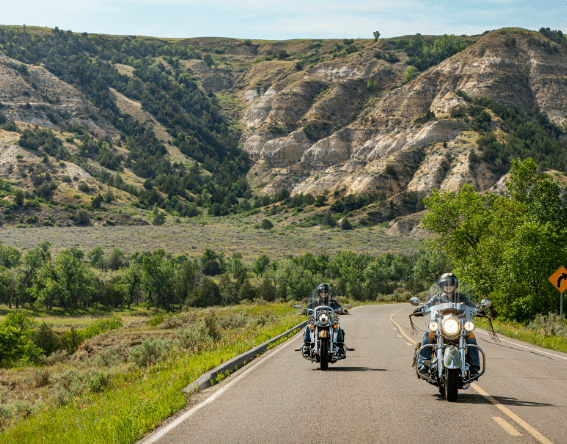Travel Journals
How young Chinese travellers are fuelling a cruise ship holiday boom

After graduating from Fudan University’s prestigious MBA programme this year, Dong Wenxin wants to keep in touch with his fellow students. The 30-year-old figured many former students probably felt the same way – eager to reconnect even when scattered across China.
Over the past three years, he has organised week-long round-trip cruises for groups ranging from four to 30 people, with some journeys reaching as far as Japan. Travellers pay between 3,000 (US$418) and 10,000 yuan each, depending on the ship’s level of luxury.
Dong’s venture is part of a growing trend among younger Chinese travellers – particularly high school and university graduates – who are increasingly embracing ocean cruises as a social way to travel, analysts have found.
Cruise ships provide a unique environment for groups to bond, with recreational activities and shared spaces without the limitations of crowding into a rented apartment.
“It’s not quite a road trip or hiking – [passengers] can’t do that on ships, so those are the limitations,” Dong said. “But they can be in a communal space enjoying lots of activities.”
Travel Journals
Columbia River Swim Spots and Beaches Under 90 Minutes from Portland

Windsurfers can catch some air at Doug’s Beach State Park, just east of Lyle, Washington.
The Pacific is cold, the Sandy River is mobbed, local public pools have limited hours and long lines, and your secret mountain swimming hole is either not so secret anymore or still inaccessible after the fires of recent years. The giant Columbia River is here for you. Sure, I-84 and train tracks can complicate access. Industrial neighbors, container ships, and barges aren’t always the backdrop of your summer beach dreams. But you can find water lapping on sand or stones at many spots along the river’s run, from where it meets the Pacific all the way through the Columbia River Gorge and farther inland.
Here are some spots within an hour and a half of Portland, organized by river mile: Mile 0 is where the Columbia meets the Pacific Ocean at Cape Disappointment, and river mile 101 is where the Willamette joins the Columbia.
In some places, currents, debris, and nearby industrial activity or boat launches make swimming or even wading unwise. Always obey posted signs, and use the river at your own risk.
Looking west at Jones Beach, near Clatskanie.
Jones Beach
River mile: 46
Closest town: Clatskanie, Oregon
Travel time from downtown: 1 hour, 25 minutes
Wave to the cows, horses, and deer on your way to this windswept expanse of sand popular with fishers. Bring a picnic blanket—the few picnic tables here look like they might have come from the set of The Road Warrior, as does the askew sign letting visitors know that ATVs are not allowed. —Margaret Seiler
Along the road at Dibblee Beach.
Dibblee Beach
River mile: 65
Closest town: Rainier, Oregon
Travel time from downtown: 1 hour, 5 minutes
Most of the signs at this Columbia County park aren’t about water safety or park etiquette—instead, they threaten huge fines for neglecting to pay the day-use parking fee. (OK, we get it!) That dubious welcome aside, this lengthy stretch of sand just west of downtown Rainier is, like Jones, popular with fishers. —MS
Fishing at Prescott Beach.
Prescott Beach
River mile: 71
Closest town: Prescott, Oregon
Travel time from downtown: 1 hour
The Columbia County park day use fee is required here, too, but you won’t find all the menacing signs like at Dibblee. You will find scattered benches, picnic tables, and fire rings/grills. There’s a designated fishing area, and you’ll want to bring a designated driver so you can stop at the storied Goble Tavern on your way home. —MS
A front-row seat to industrial activity at Trestle Beach.
Trestle Beach
River mile: 83
Closest town: Columbia City, Oregon
Travel time from downtown: 45 minutes
Not the most peaceful spot thanks to the Knife River facility dropping sand and other materials onto barges right in front of the beach, but still a sandy strand lined with trees and popular with dog owners and fishers. The gate to the parking area is locked promptly at the posted time (generally 5pm, but it changes to 7pm in the summer), so don’t get stuck. —MS
Tiny Columbia City is home to the even tinier Pixie Park.
Pixie Park
River mile: 84
Closest town: Columbia City, Oregon
Travel time from downtown: 45 minutes
You might think this park, on property owned by the Daughters of the American Revolution, was so named because it’s just so darn adorable, but it actually owes its moniker to a boat known as the Pixie. The Caples House Museum is nearby. —MS
Reeder Beach, one of Sauvie Island’s five beaches.
Sauvie Island
River mile: 94
Closest town: Portland, Oregon
Travel time from downtown: 35 minutes
Sauvie Island is technically home to five beaches—Reeder, North Unit, Walton, Collins, and Warrior Point. One of the more popular of the five, Walton is a solid all-around family beach, and on hot days it can be hard to get a parking spot nearby. (Make sure to pick up a parking pass, required in all wildlife areas on Sauvie Island. As of 2025, weekends and holidays through Labor Day also require a free beach pass, which can be booked online two weeks in advance.) The beach offers soft sand, temperate water, and a picturesque view straight across to Washington. If you can handle a little nudity, the clothing-optional Collins Beach boasts clearer water and fewer crowds. —Katherine Chew Hamilton
Kelley Point: better for a picnic than a swim.
Kelley Point Park
River mile: 102
Closest town: Portland, Oregon
Travel time from downtown: 20 minutes
Kelley Point is a beautiful place to ride your bike, sit on a log, have a picnic, and watch the ships go by, as the City of Portland technically prohibits park users from swimming or entering the water here due to “unsafe and unpredictable conditions.” Several people have drowned at the park, including two within one week in 2016, because of the high currents where the Willamette and Columbia meet. Given the number of trash barges we’ve seen floating along, staying out of the water sounds OK to us. —KCH
Wintler Community Park
River mile: 110
Closest town: Vancouver, Washington
Travel time from downtown: 18 minutes
This eastern terminus of the five-mile Columbia River Renaissance Trail from downtown Vancouver offers restrooms, picnic tables, a steep sandy beach, and a view of the action at PDX airport across the river. There’s a parking fee required from May 1 to September 30. —MS
Broughton Beach
River mile: 110
Closest town: Portland, Oregon
Travel time from downtown: 18 minutes
By Salty’s, the Sextant, and the airport, this Metro-managed beach always has something odd happening: an unexplained intact melon just sitting there, a man with a guitar sitting alone on the hood of his car playing a song you swear you heard in a dream. Oh, and there’s a giant, windswept sandy beach with room for you, me, and everyone we know. Metro requires a day-use parking fee, and if you get hooked on the bike path that runs along Marine Drive you might want to invest in the annual pass. (The pass also works at Metro’s Chinook Landing Marine Park, about nine miles east of Broughton, but that park is primarily a boat launch site and not really a beach. Chinook Landing has an archery range, too.) —MS
One of the spots at Cottonwood Beach is lined with several grounded historical boats.
Cottonwood Beach
River mile: 123
Closest town: Washougal, Washington
Travel time from downtown: 30 minutes
One of the Lewis-and-Clarkier spots on this list, Cottonwood Beach has plenty of interpretive signs about the Corps of Discovery’s stop here and the Indigenous groups that long called the area home, along with several historical watercraft. Get there early on a summer day to claim one of the little private patches of sand down the hill from nicely distanced picnic tables. Multiple signs remind visitors that there’s no alcohol allowed (with an added sign proclaiming “NO TOLERANCE” in case it was unclear), so make a post-beach stop at the 54˚40″ brewery taproom for a Half Cocked IPA and perhaps some pizza. —MS
Clothes or no clothes? The choice is yours at Rooster Rock.
Rooster Rock State Park
River mile: 129
Closest town: Oregon
Travel time from downtown: 30 minutes
Rooster Rock, divided into family-friendly and clothing-optional areas, is far enough away to feel like an escape from the city while easily fitting into a half-day trip. When temperatures rise, people cram onto a small sandy peninsula, beer cans crack open, Bluetooth speakers blast reggaeton, and you might catch people floating by on swan-shaped inflatables. The clothing-optional area brings its own party vibe. There are restrooms and picnic tables for enjoying a feast with a view of the water—note that if you’re planning on bringing a cooler to the sandy beach, you’re in for a bit of a walk. The water may have its fair share of floating debris, but the picturesque scenery and carefree vibes make up for it. —KCH
Viento State Park
River mile: 161
Closest town: Oregon
Travel time from downtown: 1 hour
Dodge some of the Hood River crowds and score some shade by taking a dip a few miles west of town at Viento State Park, also popular with windsurfers (viento means wind, after all), where you can also camp—the tent sites up the hill are farther from the water but are a bit calmer than the ones you’ll find between the railroad tracks and I-84. —MS
If the beach gets boring, there’s a climbing wall and playground just steps away at Hood River Waterfront Park.
Hood River Waterfront Park
River mile: 169
Closest town: Hood River, Oregon
Travel time from downtown: 1 hour, 10 minutes
This plush spot offers a roped-in section for swimming, a sandy crescent for sunbathing, a bird’s-eye view on the kiteboarders and windsurfers weaving their way across the river, clean restrooms, and a notch-above-the-ordinary playground with a rock climbing wall. No need to pack a picnic, either—you can easily walk to any of several great lunch spots, including Pfriem Family Brewers, Solstice Wood-Fire Pizza, or Ferment Brewing Company. —Julia Silverman
Blooms on the beach at Mayer State Park.
Mayer State Park
River mile: 181
Closest town: Mosier, Oregon
Travel time from downtown: 1 hour, 20 minutes
While this area is better known for the Gorge views offered uphill at the Rowena Crest Overlook, down at river level Mayer State Park provides a rocky beach and duck-packed coves to explore, plus a boat launch and lifejackets to borrow. A day-use fee (or an annual state parks pass) is required to park. —MS
Splashing around at Doug’s Beach, on a rare day with no windsurfers.
Doug’s Beach
River mile: 184
Closest town: Lyle, Washington
Travel time from downtown: 1 hour, 25 minutes
Just east of Lyle, Washington, Doug’s Beach State Park offers a shaded beach and picnic tables. You’ll need a Discover Pass to park here along SR-14 (the lot is well patrolled, so don’t risk going without), and be very careful crossing the tracks. —MS
Travel Journals
ROAD TRIP – Scout Magazine

We like consuming words on the page almost as much as we like consuming food on the plate. Welcome to the Scout Book Club: a brief and regular rundown of what we’re reading, what’s staring at us from the bookshelf begging to be read next, and what we’ve already read and recommend.
In this edition, we hone in on a handful of books that hit the road – because what’s summer without a road trip (or a few)? From the casse-croutes of rural Quebec through the flat yet mercurial plains of Manitoba, to the lush wilderness of BC; swerving back in time to seedy 90s-era San Francisco, and from California to New York on a gastronomical (cum-gastrointestinal) rip around Covid-era USA’s varied hot dog destinations…Strap yourself in – it’s gonna be one helluva ride!
Poutine: A Deep-Fried Road Trip of Discovery (Douglas & McIntyre), by Justin Giovannetti Lamothe | If you’re planning on visiting the Quebec region in the not-too-distant future, before you do, consider Poutine: A Deep-Fried Road Trip of Discovery as essential preparatory reading. Heck, it might even prime you for inauguration into the lively conversations and arguments that a poutine eaten in its home province supposedly inspires – if you dare to engage. And even if you simply fancy yourself a real-deal food-lover, this book is sure to enlarge your appetite for the titular famous Quebecois dish – both literally and metaphorically – and add an extra layer of context and appreciation to your next fries-with-cheese-and-gravy experience, wherever and whenever that may be. To summarize Quebecois journalist Justin Giovannetti Lamothe’s 2024 book with an easy analogy, think of it as itself a poutine: A simple investigation into the origins and history of the classic casse-croute fare provides the base (i.e. des frites); while its evolution (and/or mutation) and the political discourse surrounding it stands in for the generous heaping of cheese curds on top; and finally, the author’s personal attachments and anecdotes provide the gravy that holds it all together. Unsurprisingly, there are ‘cheesy’ moments aplenty – from the history of rural Quebec’s dairy industry and Lamothe’s father’s deep connection to it, to the science behind what makes fresh cheese curds so dang squeaky, and the heated debates that this ingredient can inspire – but there also many moments of deep personal realizations, rumination, and father-son connections triggered by the titular dish, proving how important a role food can play in our memories, relationships, and sense of community and identity. DETAILS
Available from such local independent bookstores as Massy Books, Iron Dog Books (special order only), and Upstart & Crow (special order only).*
Blue Hours (Freehand Books), by Alison Acheson | With her latest novel to be added to an already impressive cannon, local author Alison Acheson transports Keith, a writer, along with his seven-year-old son and their old Golden Retriever, Daisy, from Vancouver to Gimli, Manitoba in a borrowed ol’ VW van named “Hopper”. The impromptu road trip is an attempt to process (or distance themselves from) the grief of the all-too-recent death of wife and mother, Raziel (aka ‘Raz’), while also paying a long overdue visit to her sister and brother-in-law. In a gender role-reversal, Keith has always been the primary caregiver (or, more affectionally, ‘house-band’) for Charlie, leaving Raz to indulge in her wanderlust and artistic whims as a professional photographer – as well as her extra-marital ones, he accidentally discovers post-mortem. Raz’s hidden affairs lend a new (blue?) light to Keith’s grief, which he struggles to navigate, while also negotiating his son’s sadness and silent coping methods. Although not an altogether original plot twist, what makes Blue Hours compelling is Acheson’s gender-bending treatment of it, and her special sensitivity to nature, animals, children and elders, and all of their unexpected or inexplicable healing powers. Also worth noting, for all you book- and music-lovers out there: each chapter of Blue Hours leads with a short playlist of corresponding songs, creating a full-length soundtrack to the novel, should you want the extra layer of audio experience. DETAILS
Available from such local independent bookstores as Massy Books, Iron Dog Books, and Upstart & Crow.*
Looking for Her (Baraka Books), by Carolyn Marie Souaid | Although its plain-written prose doesn’t necessarily suggest that Looking for Her was written by a prolific and award-winning poet (it was), the second novel from Montreal writer and artist, Carolyn Marie Souaid, undoubtedly taps into her extensive experience working with Inuit communities in Quebec and teaching abroad in Nunavik. Although 43-year-old protagonist, Cate, is a full generation younger than the author herself, like Souaid she too is a writer and teacher – in Cate’s case, a literature professor at McGill University on sabbatical to focus on completing a piece of scholarly writing. Her first real encounter with the Inuit community comes after a chance meeting with a young woman paramedic, Isabel, who connects her with 19-year-old Nuna, who has moved from up North to live with her problematic boyfriend and is need of stability, a change in address, and a ‘proper’ education. Cate and Liam (her husband, a beloved high school teacher) agree to bring Nuna into their fold (and household), with the former acting as her tutor and eventually – unwittingly – also as her caretaker and pseudo-mother-figure. Cue the drama! The new living and teaching arrangement turns out to be an in-immersion school on colonialism and White-centricism for Cate – although it’s all a bit “too little, too late”. As suggested by the title, Looking for Her culminates in Nuna’s sudden, unexplained disappearance, which bonds Isabel and Cate together (while simultaneously tearing Cate’s marriage to bits) for a full-on woman hunt and investigation into Nuna’s personal life and mysterious past. This entails haphazard mini road trips through rural Quebec, complete with stops at dingy motels and roadside diners and bars, gas station and Tim Horton’s grub for sustenance, and drunken escapades. The investigation is multi-pronged, though, as Cate digs deeper into her own misunderstandings, oversights, assumptions, and the myriad mistakes she made with Nuna, by well-intendedly but recklessly stepping into the role of White Teacher and not taking the time to second guess her methods or motives, or really listen to her. DETAILS
Available as a special order from such local independent bookstores as Massy Books, Iron Dog Books, and Upstart & Crow.*
Raw Dog: The Naked Truth About Hot Dogs (Forge Books), by Jamie Loftus | Jamie Loftus, the author of Raw Dog: The Naked Truth About Hot Dogs, is first and foremost a comedian – so it’s no wonder that her book about a Covid-era summer spent “hotdogging” across the USA (i.e. road tripping from one hotdog stand to another hotdog restaurant in a cross-country marathon, averaging four or five dogs eaten per day) with her then-boyfriend (and their cat and dog) is supremely entertaining and, at times, f*cking hilarious. However, what is pleasantly unexpected is that in addition to humorous anecdotes and asides (and a slew of poop-related jokes – Loftus’ masochistic streak is strong!), Raw Dog is also smart, candid, and critical. Loftus (the leftist) doesn’t skip over how classicism, racism, and sexism all factor into the hot dog industry past and present, or the crude how-its-made details (including the many infringements on both human and animal rights that come hand-in-hand with the associated factory farming and manufacturing of the food stuff). Much like the piece of gastronomic Americana it is devoted to, Loftus’ hot dog travel-diary-cum-compendium is equal parts appetizing and appetite-turning. In a word, this book is a “trip” – and one I definitely recommend taking. DETAILS
Available from such local independent bookstores as Massy Books (special order only), Iron Dog Books, and Upstart & Crow (special order only).*
Bad Nature (Henry Holt and Co.), by Ariel Courage | Desperation, death, and self-destruction are at the wheel with Hester, the 40-year-old lawyer and misanthrope driving the cheekily titled Bad Nature – Ariel Courage’s 2025 psuedo-road trip tale – leading readers from her home base in NYC to her father’s last known place of residence in California. After an unpromising cancer diagnosis, Hester sets off on her own, in order to find and murder her estranged painter father. However, it’s not long before she gains an unlikely co-pilot for her journey – “John”, a twenty-something-year-old hitchhiker, nomadic photographer, and eco-activist on his own mission to document various corporate-committed ecological obscenities contributing to environmental destruction, sickness, and community displacement. Although it’s incredibly difficult to imagine these two opposite characters coping for long stretches of time confined together in such close quarters and with such obviously conflicting morals, somehow it works, and in the end this unexpected human connection plays a big part in determining the route that the remainder of Hester’s short life will take. Pit stops along the way veer from extravagant hotels and casinos, to cagey dump sites and farmsteads, and Bad Nature spends more time dwelling on family dynamics and human nature than it does on environmentalism.DETAILS
Available from such local independent bookstores as Massy Books, Iron Dog Books, and Upstart & Crow.*
Girls Girls Girls (G.P. Putnam’s Sons), by Shoshana von Blanckensee | The new novel from Shoshana von Blackensee, Girls Girls Girls, brings up valuable questions about everything from queerness, consent, sex work, power and gender dynamics, to religion, family, grief, and assisted suicide – all from the context of a queer young woman coming of age in the mid-nineties in a strict, Jewish household, desperately longing for the freedom to simply and unapologetically be herself. Raised with her sister, Rachel, primarily by their Orthodox Jewish mother (with her less stringent Bubbe acting as a valuable sounding board and support), eighteen-year-old Hannah hits the road to the USA’s queer mecca (San Francisco) with her best-friend-cum-girlfriend, Sam, at the first opportunity they get. A tale of firsts – first love, first sex (gay and straight), first heartbreak, first drug experiences, first encounter with death – Girls Girls Girls is also a “first” of its own, as von Blackensee’s debut novel. Which might explain why, at times, it can feel clunky and awkward in its revelations (the amount of major milestones that Hannah knocks off over the course of a mere eight months seems a bit too contrived) and cliched in its choices; and despite bringing multiple big issues into the fold, few of them actually summon any ramifications and/or are afforded serious contemplation. (For instance: a drug-fuelled, non-consensual sexual encounter between a minor sex worker and her paying client is reconciled with a confession of addiction as the latter’s excuse; and the sexual assault of a stripper while on the job is mentioned in passing simply as a horror story that partially inspires Hannah to rethink her career choice). This stands in stark contrast to the emotional gravitas and details afforded to a family member’s sudden sickening and death by cancer (owing, probably, to the fact that von Blanckensee’s day job is as an oncology nurse), which means that the most powerful passages are those about the relationship between Hannah and her feisty yet ailing grandmother – a surprising, welcome twist to an otherwise predictable story. DETAILS
Available from such local independent bookstores as Massy Books (special order only), Iron Dog Books, and Upstart & Crow (special order only).*
*It would be remiss for me not to mention Vancouver’s various independent and used book stores, and encourage you to pay them an in-person visit to seek out these and other titles.
Travel Journals
North Dakota’s open roads on two wheels

As thousands of motorcycle enthusiasts prepare to descend on the annual Sturgis Motorcycle Rally, North Dakota Tourism invites riders to extend their stay and discover the open roads.
The state offers a bucket list worthy experience of epic landscapes on the endless horizon on a road trip on two wheels.
Riders will embrace the wide-open spaces, friendly faces, out-of-the-way diners, and rugged scenery of ND.
Indeed, there are 70,000 square miles of landscapes to explore
There are many scenic byways and highways, each offering a distinct adventure:
Old Red/Old Ten Scenic Byway: Historic routes through buttes and prairies.
Sheyenne River Valley National Scenic Byway: Tree-covered hills and winding rivers.
Standing Rock National Native American Scenic Byway: A journey through rich Lakota and Lewis & Clark history.
Killdeer Mountains Four Bears Scenic Byway: Dramatic Badlands landscapes.
Sakakawea Scenic Byway: Vews of the Missouri River valley.
Highway 200 and 200A: A cross-state ride showcasing diverse topography.
Whether you seek historical immersion, natural vistas, or simply the joy of an open road, North Dakota provides the perfect prelude or postlude to a Sturgis Rally trip.
For more information on motorcycling routes, visit https://www.ndtourism.com/motorcycling.
Related News Stories: What’s new in North Dakota Legendary road trips in North Dakota North Dakota: Gateway to the Great American West Frontier launching 15 new routes New upgraded experiences coming to three Royal Caribbean ships Ryanair’s new Chania, Rhodes flights take off at Bournemouth What’s New in Fort Myers Titan Travel – TravelMole
-

 Brand Stories2 weeks ago
Brand Stories2 weeks agoBloom Hotels: A Modern Vision of Hospitality Redefining Travel
-

 Brand Stories2 weeks ago
Brand Stories2 weeks agoCheQin.ai sets a new standard for hotel booking with its AI capabilities: empowering travellers to bargain, choose the best, and book with clarity.
-

 Destinations & Things To Do2 weeks ago
Destinations & Things To Do2 weeks agoUntouched Destinations: Stunning Hidden Gems You Must Visit
-

 Destinations & Things To Do2 weeks ago
Destinations & Things To Do2 weeks agoThis Hidden Beach in India Glows at Night-But Only in One Secret Season
-

 AI in Travel2 weeks ago
AI in Travel2 weeks agoAI Travel Revolution: Must-Have Guide to the Best Experience
-

 Brand Stories1 month ago
Brand Stories1 month agoVoice AI Startup ElevenLabs Plans to Add Hubs Around the World
-

 Brand Stories4 weeks ago
Brand Stories4 weeks agoHow Elon Musk’s rogue Grok chatbot became a cautionary AI tale
-

 Brand Stories2 weeks ago
Brand Stories2 weeks agoContactless Hospitality: Why Remote Management Technology Is Key to Seamless Guest Experiences
-

 Asia Travel Pulse1 month ago
Asia Travel Pulse1 month agoLooking For Adventure In Asia? Here Are 7 Epic Destinations You Need To Experience At Least Once – Zee News
-

 AI in Travel1 month ago
AI in Travel1 month ago‘Will AI take my job?’ A trip to a Beijing fortune-telling bar to see what lies ahead | China












